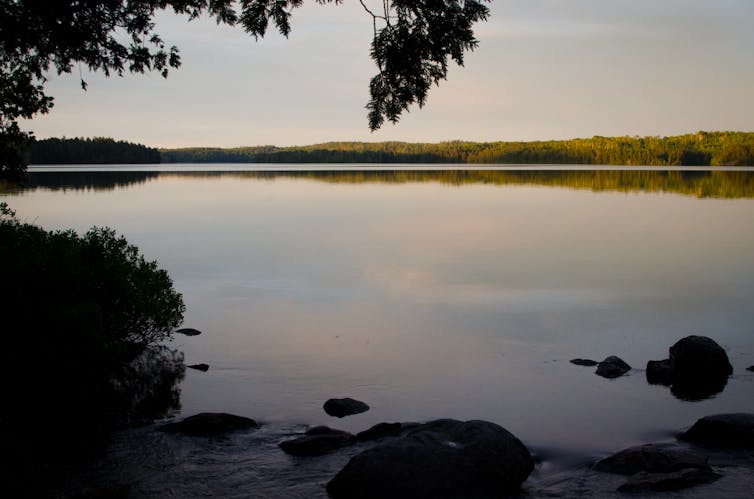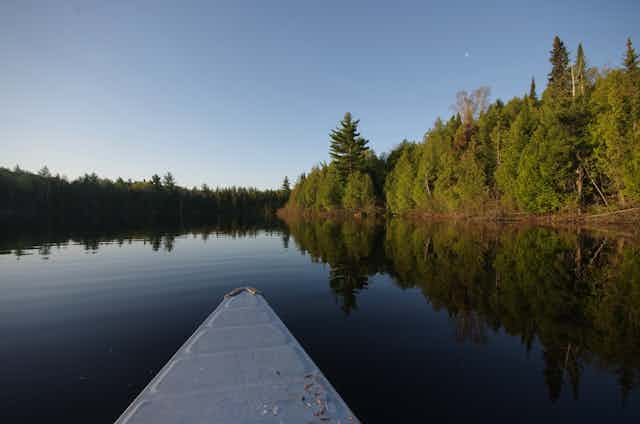The celebrated Boundary Waters Canoe Area Wilderness (BWCAW) in northeastern Minnesota, which constitutes one million acres of the Superior National Forest, is among the most pristine river and stream ecosystems in the United States. With any luck, it will remain so.
But that luck will depend on whether the U.S. Forest Service, which manages the unspoiled landscape, rejects the request of Twin Metals – a wholly owned subsidiary of Antofogasta, the Chilean mining conglomerate – for a renewal of its federal mineral leases in the Rainy River watershed; the majority of this vast basin of lake, marsh and wetland lies within the BWCAW and adjacent Voyagers National Park.
The Bureau of Land Management oversees such leases but because the resources to be mined, including copper and nickel, underlay portions of the Superior National Forest, the Forest Service must consent to any mining operation. As part of its analysis of Twin Metals’ request, the federal agency held public hearings and conducted a 30-day public comment period.
Yet so worried is the Forest Service about the potential of sulfide mining to severely disrupt the Boundary Waters that it issued an advisory in advance of public comment period to explain why it was considering whether to withhold consent for lease renewal. “The Forest Service is deeply concerned by the location of the leases within the same watershed as the BWCAW, and by the inherent risks associated with potential copper, nickel and other sulfide mining operations within that watershed,” its press release declared. “Those risks exist during all phases of mine development, implementation and long-term closure and remediation.”
For an agency long accused of being too close to such resource extractors as the logging industry, this public hand-wringing is extraordinary. Then again, maybe it’s not. After all, the beauty of the Boundary Waters’ 2,000 glacial lakes and countless streams and the thick boreal forests that frame its crystalline waters draws more than a quarter-million visitors a year to paddle, hunt, hike and camp. These aesthetic virtues and recreational values were why the Boundary Waters area was first set aside in the 1920s; they are what makes the Superior National Forest, superior.
The debate in Minnesota mirrors the many contested decisions over how to prioritize conservation, recreation and resource extraction on public lands in the western U.S. It’s also a gauge of how much public opinion can weigh in preserving special places like the Boundary Waters and other ecological gems.
One of few great canoe countries in world
The formation of the Boundary Waters Canoe Area Wilderness is firmly rooted in recreation and the value of preserving natural spaces. Arthur Carhart, a landscape architect and wilderness advocate, was the Forest Service’s first recreational planner, joining the agency in 1919.
Carhart made an immediate mark. Assigned to develop a plan for roads into and cabins surrounding Trappers Lake in Colorado’s White River National Forest, he advised his supervisors that the best and highest use of the lake and its environs was no use at all. The agency accepted his advice and by implication Carhart’s subsequent conclusion about the need to protect other imperiled landscapes.
“There is a limit to the number of lakes in existence,” he wrote to author and conservationist Aldo Leopold, who was also pushing for wilderness designations throughout the National Forest system, “there is a limit to the mountainous areas of the world, [and] there are portions of natural scenic beauty which are God-made.” Such divine terrain, uncluttered and primitive, “of a right should be the property of all people.”

Carhart felt just as strongly in 1921 when assigned to evaluate the recreational potential of of the Superior National Forest. As he toured its wet, green expanse, it became obvious what the forest should support and what it should not. “There is one outstanding feature found in the Superior National Forest which is not present in any other nationally owned property,” he noted. “This is a lake type of recreation. The Superior is unquestionably one of the few great canoe countries of the world.” It would be nonsensical “to make the Superior a foot, horseback, airplane or auto playground for this would mean non-utilization of existing natural advantages.”
Yet despite the Superior’s abundant recreational opportunities, this “National playground of National service” initially went unfunded, Carhart lamented, because “Congress [had] not made any appropriation for recreation in the National Forests.” That lack of allocations would be resolved in the coming years; the multiple-day canoeing trips that Carhart anticipated have become an annual rite for thousands.
Carhart’s report is rightly credited with laying the foundation for all subsequent recreational planning in the forest. In 1926, for example, Agriculture Secretary William Jardine signed off on the Superior Roadless Area (the forerunner of the Boundary Waters Canoe Area). Its singular purpose was to “conserve the value of the Superior National Forest as a game and fish country and as a national playground offering a virile and wholesome form of recreation off the beaten paths.”
Over the years, additional legislation beat back efforts to erect hydroelectric dams and promoted linkages between the Superior and the adjoining million-acre Quetico Provincial Park in northwestern Ontario. The Boundary Waters Canoe Area is also the only wilderness with a provision prohibiting airplanes and helicopters flying below 4,000 feet. These restrictions have helped it become what Carhart believed it should be, a “magnificent play area.”
Value of nature-based recreation
Three decades later, another conservationist, Sigurd Olson, also wrote movingly of the Boundary Waters’ wildness. Years of canoeing its limitless reaches led him to pick up his pen to convey to those who had never plied its cold waters what makes the experience so beguiling. “The movement of a canoe is like a reed in the wind. Silence is part of it, and the sounds of lapping water, bird songs, and wind in the trees,” he wrote in 1956.
Protecting this silence, and the solitude it promotes, required a fierce defense, which Olson mounted by by arguing successfully that the Forest Service should block the noisy intrusion of aircraft over the glittering lakes, shut off the angry buzz of chainsaws in the deep woods and protect the habitat of lynx and loon.

The key question for Olson 60 years ago – and which remains relevant today – was how Americans wanted to experience nature and under what conditions: “We are waging a battle for man’s spirit. No task is more important, for the wilderness we save today will provide moral and spiritual strength and balance in a world of technology and frenzied speed.”
By rejecting Twin Metals’ request for a renewal of its mineral lease, the U.S. Forest Service will reaffirm Olson’s and Carhart’s convictions. It will also uphold its own managerial legacy reflected in its current concerns that this mining operation would contaminate land and water beyond repair. Should the Obama administration then intervene by placing a 20-year moratorium on mining in the region, as Walter Mondale and Theodore Roosevelt IV have urged, it will give the agency, the U.S. Department of Agriculture, legislators and activists time to purchase, extinguish or prohibit the filing of mining claims there, similar to the Mining in the Parks Act (1976) that has since protected Death Valley National Park.
Whatever the strategy, the end game is clear. From its inception 90 years ago, the Boundary Waters Canoe Wilderness Area has been a striking reminder that some places are simply too biologically significant, spiritually transcendent and gloriously wild to mar.

